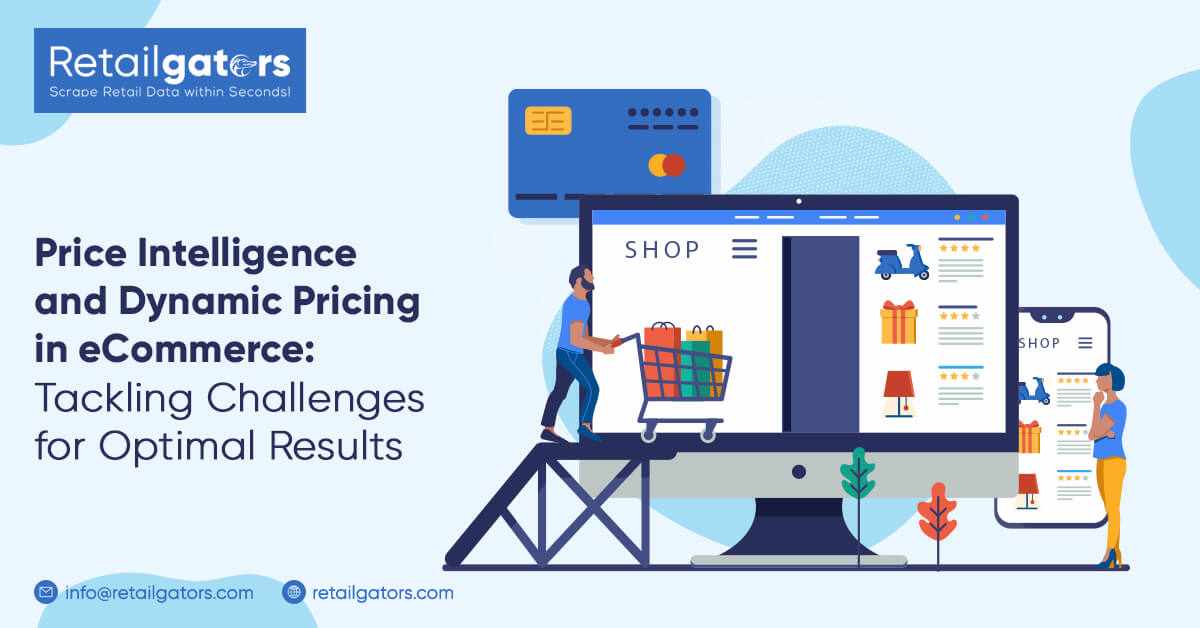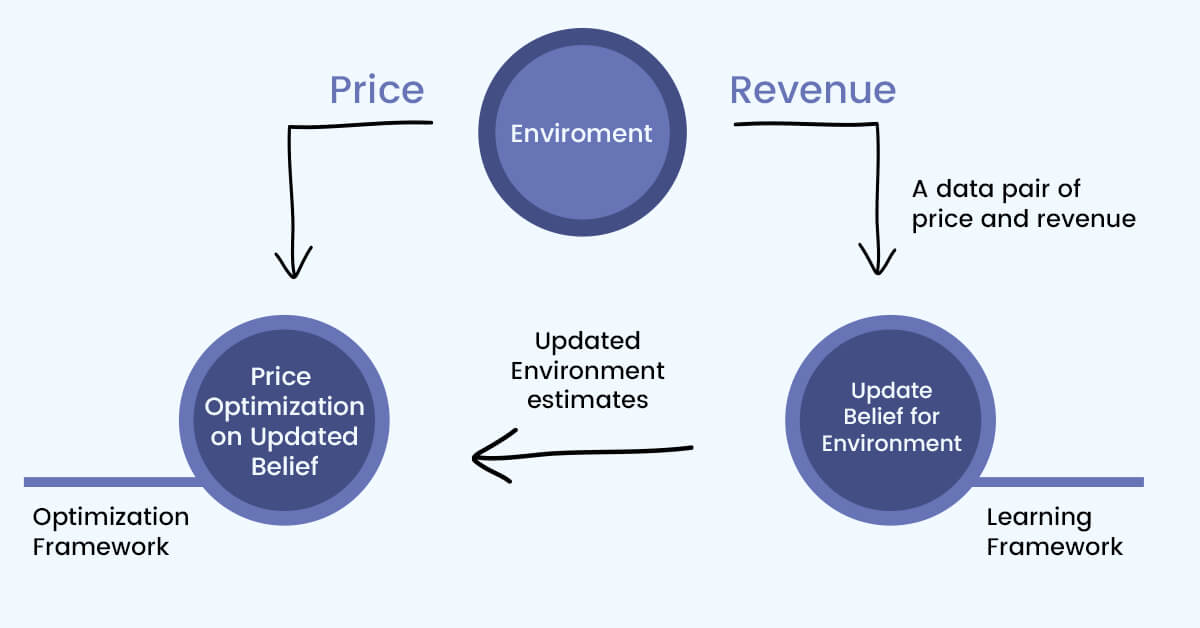
Price Intelligence and Dynamic Pricing in e-commerce: Tackling Challenges for Optimal Results
In the fast-paced world of e-commerce, pricing can make or break a business. Customers have different value perceptions, and the market is competitive to be complacent. Pricing intelligence can help you succeed. It empowers you to make quick, confident decisions about prices for your products across our distributed global network of partners.
In this blog post, we will discuss key challenges faced by e-commerce retailers that take into account pricing intelligence and dynamic pricing strategies
What are the Challenges of Price Intelligence and Dynamic Pricing in e-commerce?
Price is a key component of e-commerce, and businesses have thousands of products with varying price points. With an enormous number of products, it is difficult to know where to start when determining prices. There are many variables and little time on the part of the e-commerce business owner.
Businesses must store information about customers, competitors, and market trends to create the right pricing strategies for their e-commerce stores. It will enable them to make effective decisions. When you set prices to attract customers and optimize their profit margins.
Challenges of Price Intelligence and Dynamic Pricing in E-commerce
1. Price is not the Only Differentiator.
Customers expect e-commerce businesses to offer them convenience, personalized services, and various choices. While price is important, it's not the only differentiator between you and your competitors. Price takes on a more significant role when the differentiation in other areas, such as product quality, is low.
2. Types of Price Models Are Numerous.
Many types of price models can be used in e-commerce. You can use commoditized pricing by choosing a standard price for an item and offering special sale events or promotional discounts to drive sales. It is just one option. To stay competitive, it's essential that you know your pricing model and use the correct one for each product.
3. Comparison Shopping Can Be Difficult.
Price comparisons among retailers are difficult. Due to many variables and a need for more data on competitors' prices. Overcharging customers is okay if you have a larger volume to offset the price increase. Reward loyal customers who spend more money with special offers and promotional discounts by analyzing how much they spend with you.
4. Pricing Tactics May Need to Work.
Pricing tactics are challenging in the e-commerce industry. With many products, customer preferences, and operational constraints. You can only rely on one business model for some e-commerce products. You must tailor each pricing strategy to increase profit margins and customer loyalty.
5. Change is a Constant.
With such a competitive industry, customers expect a price change, so you must keep up with them. Stores with outdated pricing models are at risk of losing customers. It is why it is essential to monitor the competition. You have to be bold in altering prices based on changes in market conditions.
6. Determine the Right Price Point.
Price points are challenging in e-commerce because they need to be varied within a product category and between different stores. They must be dynamic. To enable you to make better decisions on price, you must collect and analyze customer data, such as purchasing history and trends, to determine the right price point for each product.
How can you overcome the above challenges?

Price intelligence and dynamic pricing are critical elements of an e-commerce pricing strategy. Through price intelligence, you can collect data that covers market prices, the cost of the product, and your costs to ensure that you are competitive with your competitors.
You can make informed decisions about participating in a promotion using this information. You can use these strategies when determining prices for specific products or categories. You can use them to inform your decisions based on the market's competitiveness so that you're not overcharging customers.
Dynamic pricing helps e-commerce businesses overcome some above challenges by:
1. Removing Friction from the Purchase Process.
When using dynamic pricing, customers can view the real-time pricing of each item in a product category. It removes Friction from the purchase process to ensure more people purchase in your e-commerce store. It is essential for e-commerce businesses that sell products based on how many items are purchased together. It can prevent empty cart abandonment by showing customers that there are other related products they want or need.
2. Visibility Into the Purchase Process.
Dynamic pricing clarifies the purchase process by letting you monitor and control prices as a customer considers purchasing an item. Once you know that a customer is interested in a product. You can adjust your price dynamically to ensure they are more likely to buy it.
Customers who see that prices have dropped may find it easier to buy. In addition, knowing whether there are multiple items in a category. This helps you determine what other products your customers might want or need.
3. Less Competition Over Price Increases.
Because fewer e-commerce retailers are selling similar products, dynamic pricing enables you to profit from price increases without losing customers. You can undercut your competitors. It is essential when all e-commerce retailers are selling similar products.
4. Predicting Future Costs.
Dynamic pricing enables you to predict future costs and use this information to set prices.
Before starting a new promotion, you must gather data showing how much traffic you expect.
After determining the cost, you can adjust your advertising strategies. With the strategies, your ads are seen by more customers who have shown interest in the products or categories being promoted.
5. Price Matching.
Dynamic pricing decreases Friction in the price-matching process. So that you can adjust prices and match your competitors' prices in real time. It is a great way to give customers a better deal while maintaining profit margins. It helps you stay competitive with other e-commerce retailers selling similar products.
6. Increase Loyalty With Lower Prices.
Dynamic pricing allows you to reward customers who are loyal and spend more money with your business. By giving them lower prices to encourage additional purchases in the future. E-commerce businesses must reward customers who spend more money at their sites with lower fees or special offers.
How do you plan on using pricing intelligence and dynamic pricing to improve your e-commerce business?

If you're running an e-commerce business, you're likely looking for ways to improve your revenue and profits. One strategy that many successful e-commerce companies use is pricing intelligence and dynamic pricing. But what are these concepts, and how can you use them to improve your business?
Pricing intelligence refers to the process of gathering and analyzing data about your competitors' prices, as well as the costs of similar products in your industry. Doing this lets you gain insights into the market and make more informed decisions about your pricing. For example, your prices could be lowered compared to your competitors or charge more for certain products based on their popularity or scarcity.
Dynamic pricing, on the other hand, refers to adjusting your prices in real time based on various factors. These factors include demand, inventory levels, and competitor pricing. It can allow you to maximize revenue and profits by charging more when demand is high and lowering prices when inventory is high or when sales are slow.
So, how can you use these concepts to improve your e-commerce business? One approach is to use pricing intelligence to identify areas where you can adjust your prices to be more competitive. For example, if you discover that your prices are consistently higher than your competitors, consider lowering them to attract more customers.
Once you have a good sense of where your prices should be, you can start experimenting with dynamic pricing. It might involve using algorithms to adjust your prices naturally based on various factors or manually changing your expenses.
The goal of using pricing intelligence and dynamic pricing is to find the sweet spot. Where you're maximizing revenue and profits without turning off customers with high prices. Analyzing the market and adjusting your prices can give you a competitive edge in e-commerce.
Conclusion:
E-commerce retailers who can adjust their prices to meet the changing demands of their customers are more likely to stay competitive. Dynamic pricing keeps you competitive with other e-commerce retailers. It can help you increase profits by attracting new customers.








Leave a Reply
Your email address will not be published. Required fields are marked